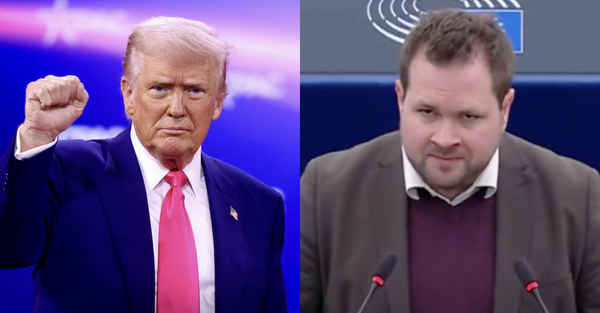
Updated: A remorseful Rio Tinto is promising to do better, after the mining and smelting company angered Southland, NZ and much of the world with its wanton disregard for local communities and the environment
Analysis: Rio Tinto has embarked on a nationwide charm offensive in a belated bid to continue smelting aluminium at Tiwai Point near Bluff.
The multinational mining company’s Canada-based aluminium chief executive Ivan Vella has been meeting discreetly with ministers (Grant Robertson, Megan Woods and James Shaw) and business leaders (like Fletcher’s Ross Taylor) over the past few days.
On Friday afternoon, that culminates in the public eye when NZ Aluminium Smelter’s newish chief executive Chris Blenkiron speaks to the Trans-Tasman Business Circle in Auckland.
READ MORE:
* Tiwai smelter uncertainty 'not good for NZ', says energy minister
* Tiwai Point smelter owner 'hasn't read the tea leaves' in dry lakes – Meridian
What he wants to talk about is the environmental work programme underway at Tiwai, the company's contribution to the energy sector, and his hopes for securing a future for the smelter beyond 2024.
What others in the NZ business community will want to discuss is the smelter’s uncertain impact on NZ power prices, availability and emissions reductions.
The company has repeatedly threatened to pull out of NZ, at the cost of Southland jobs and billions in revenues for the majority Govt-owned hydro generator Meridian Energy.
In an interview with Newsroom, energy minister Megan Woods said she'd told Rio Tinto its behaviour was "not good for NZ or Southland".
The company’s unpleasant corporate demeanour stood out when it destroyed 46,000-year-old Aboriginal rock shelters of exceptional archaeological and cultural significance at Juukan Gorge, near one of its Western Australia iron ore mines. There were sweeping personnel changes from chief executive down. In the tiny corner of the empire that is New Zealand, wunderkind Blenkiron was headhunted to save the smelter.
"Jukaan Gorge is a stark example of what we need to learn from and take the lessons from." – Chris Blenkiron, NZ Aluminium Smelter
Blenkiron spoke with Newsroom ahead of his speech. "I think Rio Tinto's really had to stop, take pause and think: if we want to operate, and be welcomed into communities, they have to want us to be there," he says.
"Jukaan Gorge is a stark example of what we need to learn from and take the lessons from. We've had a significant shift inside of Rio, and it's obviously filtered all the way through to Tiwai."
Rio Tinto had belatedly realised in a world of rising carbon prices, where smelters around the world averaged 12-13 tonnes of CO2 for every tonne of aluminium produced, that renewably powered Tiwai’s relatively-small two tonnes of CO2 was quite a selling point.
And meanwhile, aluminium prices have risen from a March 2020 low of US$1,480/tonne up to a peak of nearly $3,500/tonne earlier this year, before settling around $2,400 – providing more healthy returns on the company’s Tiwai investment.
"Historically, US$2,400 might seem a bit elevated, but right now around 50 percent of smelters around the world are underwater, losing money, just with the cost pressures," Blenkiron says.
So Rio Tinto has four challenges if it wants to win back NZ confidence.
1/ Clean up its mess. A report in October found “numerous legacy and ongoing sources of contamination to the environment” from the Tiwai site, including ouvea premix – better known as dross – spread around Southland. It’s signed an agreement with Ngāi Tahu to work together to restore the whenua and, explicitly, to provide the smelter a future beyond December 2024. “This agreement reinforces the commitments we’ve made to remove waste and remediate the site, irrespective of the smelter’s future,” Blenkiron says. "You mentioned the memorandum of understanding signed with Ngāi Tahu – I think that's a good example of how we want to operate into the future, and that's across Rio globally."
2/ Cooperate on power needs. Last year’s dry winter and power outages showed the need for Transpower’s National Grid to call on extra fast-peaking generation capacity, but also for major industry like NZ Aluminium Smelter, Fonterra and the country’s big cool stores to help out. The smelter has a demand response provision in its Meridian contract, but that was no good when it came to the crunch on the coldest night of the 2021 winter. Blenkiron says the company is working on more solutions, and in April this year agreed to a reduced share of Meridian’s hydro output. 3/ Co-exist with other consumers. Bruised by the low price it had to agree to keep Rio Tinto in Southland until 2024, Meridian went looking for alternatives when that 5,000GWh deal ends in December 2024. It’s moved on. Last month, it signed Woodside Energy to develop a big project to use the energy from its hydro dams to produce green hydrogen, rather than Coke cans. Now that Rio Tinto has decided it wants to stay, Meridian says the two aren’t mutually exclusive – but Rio Tinto will have to pay more and show far greater flexibility. 4/ Contribute to national project. There will be great interest in Rio Tinto’s sustainable power generation, reported first by Newsroom. In Queensland, Ivan Vella has already called for proposals to build more than 4GW of solar and wind capacity near its Gladstone smelter and refineries, at a cost of US$10-12 billion.
Even allowing for calm, cloudy days, something that scale would generate twice the 570MW needed for a smelter like Tiwai – and Tiwai consumes 12 percent of New Zealand's electricity, as much power as all the households in Auckland combined.

Blenkiron says they’re watching progress in Queensland and considering similar renewable electricity solutions for New Zealand, that could feed their excess generation back into the National Grid. “I do think New Zealand needs more renewables, and having a big load down there like Tiwai can help incentivise us to contribute.”
Over the years, Rio Tinto has repeatedly had NZ over a barrel in its Tiwai Point brinkmanship. Now, Blenkiron insists, that’s changed. “Rio is certainly passionate and determined to explore everything we can to try and keep it open now, and about the contribution that brings to the global energy transition.”
'Our social licence had become tatty'
In his speech to trans-Tasman business on Friday afternoon, Blenkiron expanded on his Newsroom interview.
In 10 months in the role, he said he'd talked with business leaders, community members, politicians, ministries, iwi leads and customers around the country. "It became clear to me that we were brilliant at manufacturing aluminium, but our social licence had become tatty," he said.
"New Zealanders felt shortchanged after feeling we had engaged in brinkmanship resulting in everyone paying more for power because of us.
"We scored an own goal when we took too long to move the ouvea premix stored in the community. Meanwhile Rio’s reputation was at all time low after the destruction of Juukan Gorge in Australia – some culturally significant caves over 60,000 years old.
"By now – you may be wondering why the heck I still took the gig!"
"When matched with Rio’s balance sheets, we can go even further by reducing the cost of new projects, making it more affordable to build and grow our energy sector in New Zealand." – Chris Blenkiron
But he said he wanted to lead a changed approach. "I can’t change what’s been, but I can be part of what happens now."
NZ Aluminium Smelter employed 1000 people, and supported the employment of 2500 more, he said. Those workers helped the smelter produce 330kt of aluminium per annum – 90 percent of that exported around the world. About 75 percent of aluminium ever made was being recycled and remained in use today.
He acknowledged the smelter's enormous electricity demand. But because it was based in Southland using renewably hydro power, that made Tiwai Point's aluminium some of the least carbon intensive in the world. "We’re damn near the best on the planet and that’s something we’re really proud of."
The world was squaring up to the reality of climate change and the immense challenge to get to net zero. "Right now, all eyes are on how the world energy sector is grappling with this transition. And it’s a fact that to electrify and rebuild the fossil fuel burning plants the world needs lots of aluminium.
"Aluminium is essential for solar panels, electric vehicles, wind turbines and even those transmission lines that we occasionally say we pay a bit much for."
He confirmed Tiwai could help with dry winters and shortages by dialling down its usage for a few hours – and also by investing in new renewable generation capacity.
"Large single users of energy, like ourselves, provide the commercial backdrop to anchor new renewable projects," he argued. "And when matched with Rio’s balance sheets, we can go even further by reducing the cost of new projects, making it more affordable to build and grow our energy sector in New Zealand."







